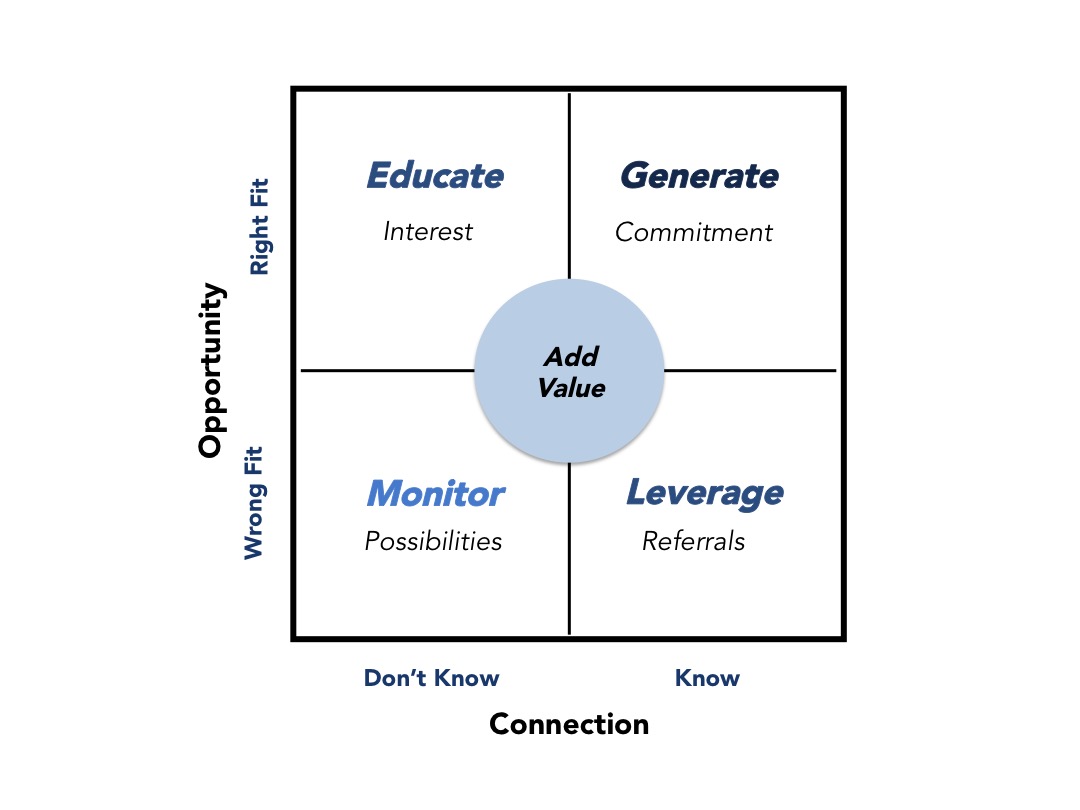
How To Generate New Career Opportunities
19th Jan 2017
When you’re considering how to generate your next career opportunity, the challenge is often about knowing where to look. Here are some ideas about how to go about it in a clever way that maximises your reach, and your time.
Most people think too narrowly when they’re looking for the next role. It limits them to only a few choices. As a result, it’s often the case that none of the choices can look too appealing, so they’ll stay put, stewing in frustration.
Don’t do that.
When you’re looking for the next role, start broad. Simply put, consider everyone, and everywhere, as a possible source of career opportunity. At the same time, be smart about how and where you focus your efforts.
Here’s an approach to help with that. It’s something I’ve developed and used to help hundreds of people generate new opportunities.
First, identify the critical few criteria for what you want in the next role. Aim for 5-6 key words or ideas that sum it up. For example: tech industry, challenging work, a boss who will actively mentor you, an opportunity to make a real difference, autonomy, financial stability, et cetera. Those criteria will help inform what is a ‘right fit’ for you. A tool like Career Anchors can be useful here.
Next, it’s about identifying the people and organisations that may be useful. Not just the ones you’d like to work with, but a broader list that covers four bases:
- People and organisations you know, and you think would be a right fit for you
- People and organisations you know, and you think aren’t the right fit for you (for now)
- People and organisations you don’t know, and you think would be a right fit for you
- People and organisations you don’t know, and you think aren’t the right fit for you.
A useful place to start is to scan your LinkedIn contacts. You can export your contacts into a CSV file for easier scanning.
Then map these people to the model below.

Think of it like a stovetop. You use different burners, at different heats, for different groups.
- Generate: these are the people and their organisations that you know, and you’d love to work with. Approach these people directly. Your aim here is to create alignment between what you’re interested in, what you offer, and what they need, and then generate commitment for you to work with them.
- Leverage: these are the people you know who, for whatever reason, you don’t think would be a right fit for your criteria. However, they are likely to have good connections and/or advice for you. Leverage those relationships to get referrals to people and organisations in the top left quadrant, and to strengthen your positioning with those in the top right.
- Educate: these are the people or organisations that you don’t have a strong relationship with yet, or perhaps any relationship at all. And, you’re excited about the idea of working with them. Use your contacts in the Generate and Leverage quadrants to help you connect with them. When you meet with them, your goal is a) to listen well, and b) to educate them about the value you bring to help solve their issues.
- Monitor: these are the people, organisations and industries you don’t have a lot of interest in working with, and don’t have connections into. Don’t write them off. Be curious: you can learn a lot from difference. Set up monitoring mechanisms (eg subscriptions to magazines like Fast Company that cover mega-trends across a range of industries) to help you spot practices that could be transferred into your domain. When you meet someone new in this quadrant, put your ‘learning hat’ on. See what possibilities you can discover.
You can use the Career Opportunity Generation template to make all of these easier for you.
Right in the middle, there’s ‘Add Value’. Regardless of who you meet in your search, find ways to help them, regardless of what you might get from the interaction. They payoff is a) they’ll remember you as being a useful person (which can only be a good thing) and b) you’ll have made a difference (which is what it’s all about, right?) I’ve written about the value of adding value before – see Networking For When It’s All Too Hard for more ideas on that.
Like this post? You’re only getting half the story. Sign up to my ‘Fresh Thinking’ newsletter, delivered monthly to your inbox.
Are you a Change Maker? Learn more about my Change Makers programme, including next intake dates.
Photo source: brendaknowles.com

